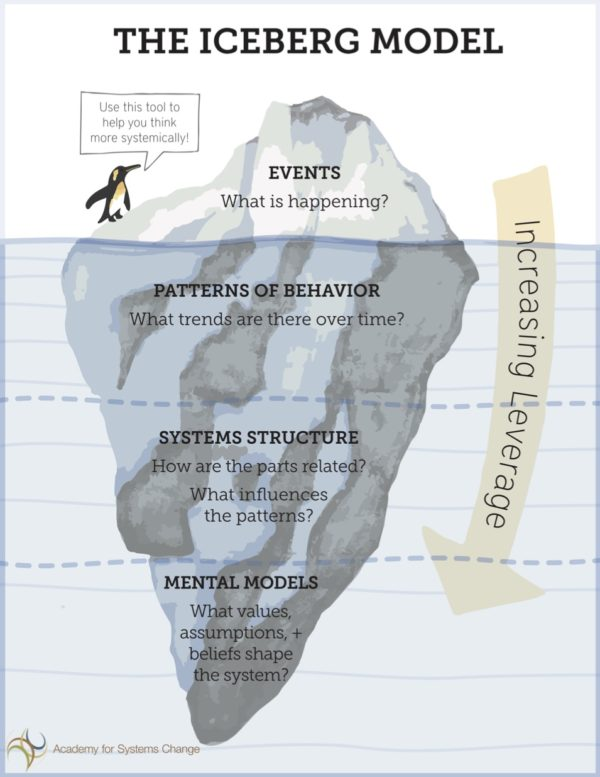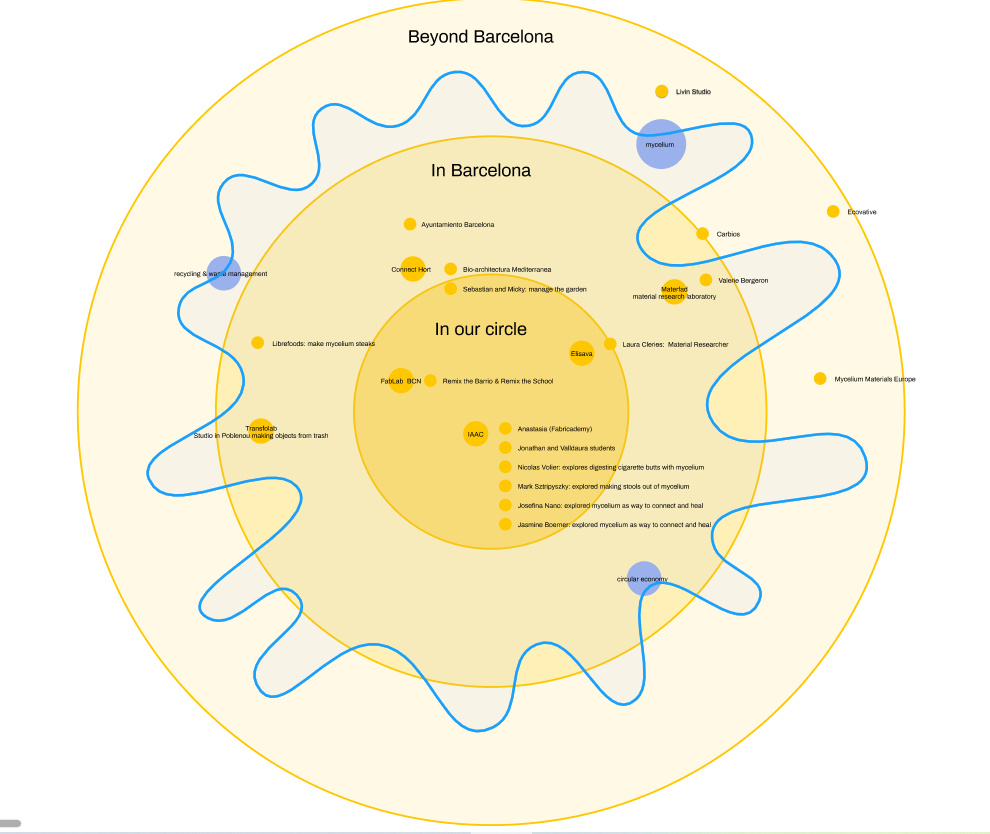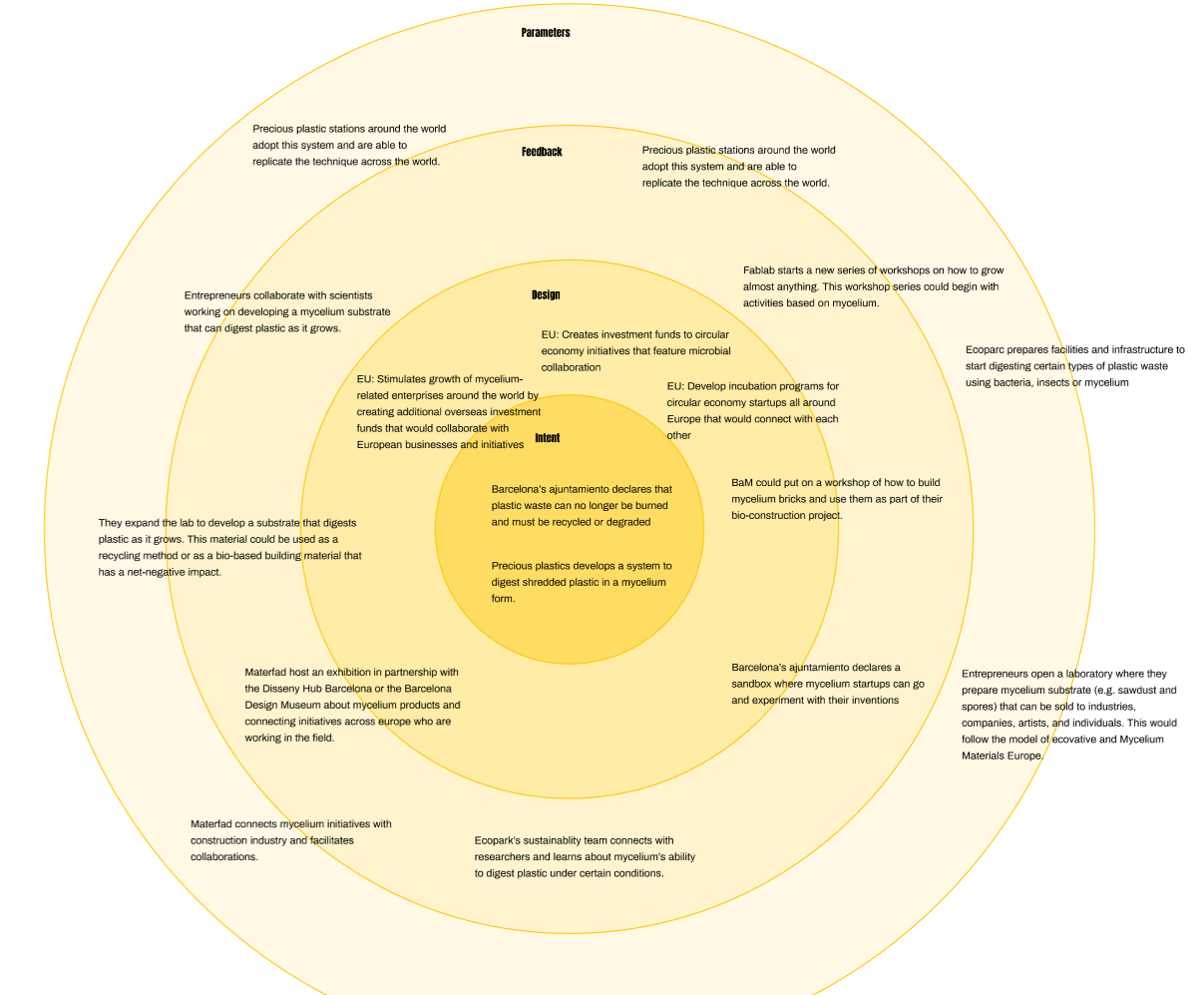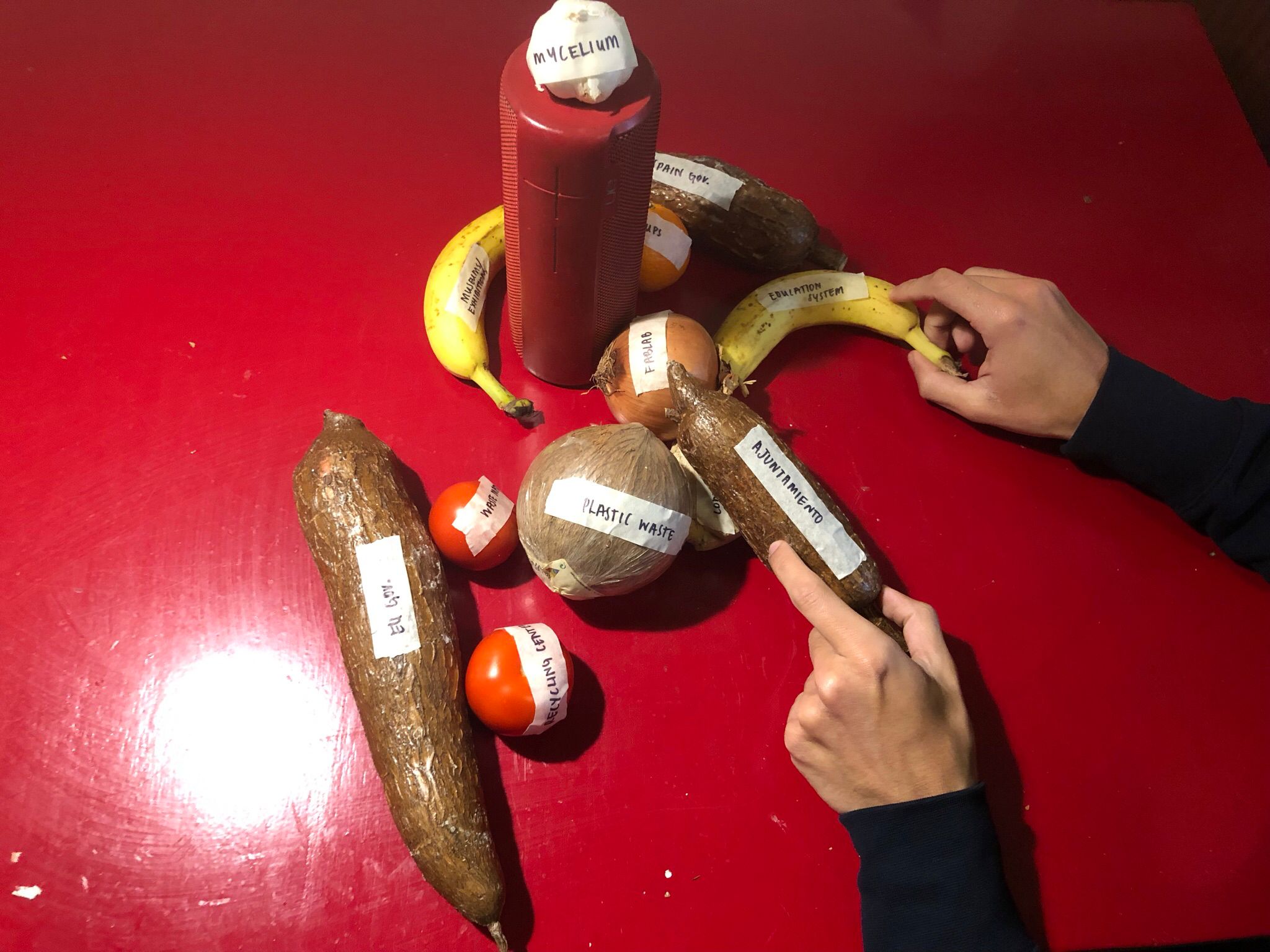
Introduction
This week we were introduced to the collective Holon by Markel Cormenzana and Merce Rua. Holon is a design cooperative that sees a world in transition, helping organisations align their goals with the needs of people they serve and its social and environmental context. We learned about the development of the practice of design throughout the past century, and how it has evolved into what it is nowadays, focusing on strategic design intervening in the natural environment.
Shifted our perspective on how we assess challenges, where we need to evolve new ways of designing to be able to tackle with the kind of challenges reality is forcing upon us. Instead of solving a problem that will inevitably spring other problems, caring for the problem.

Design Intervention
Before the start of this class, we were divided into groups as part of an exercise to create a design intervention in the public with the topic of our choice. My group consists of just Julia and I, as we had previously approached each other through our mutual interest in fungi and its potential of bioremediation to solve some of humanity's current problems. Our approaches are different, but they complement each other. I'm focused on mycelium's ability to degrade plastic, and Julia is more focused on mycelium's ability to serve as an alternative building material. Our focus is different, but one can seamlessly flow into the other one.
As a first part of this exercise, we mapped out the local (and a few non-local) actors that did work related to what we were looking for. We divided them into three categories: mycelium, circular economy, and waste management. The latter 2 oftentimes counted as one, but not always and hence received seperate categories. We managed to form a web of resources that stretched from our circle of easily reachable agents (such as previous MDEF students or collectives that were linked to IaaC) to international agents that did very similar work (such as Carbios in France or Ecovative in the U.S.).

Timelines
We mapped out some of the potential actors that could have an impact on the development of mycelium as a central vehicle for a circular economy. This included local organisations such as the Fab Lab Barcelona, BioMa, Masterfad, the Ayuntamiento de Barcelona and international organisations with a strong influence in what happens locally such as the European Union.
Download Files
Timeline

Mapping entities' potential contributions
Download Files
Onion structure mapping of entities

4D Mapping
We then created a 4D structure of the ecosystem relating to plastic waste, its relation to mycelium, the education system, local actors, the local government and the European Union. It tells the story of how plastic waste is a very central and large problem, how there are many actors trying to do something about it but nobody is tackling the issue properly. Meanwhile, mycelium and its multiple teeth of various uses is patiently waiting, looking over the whole sculpture.